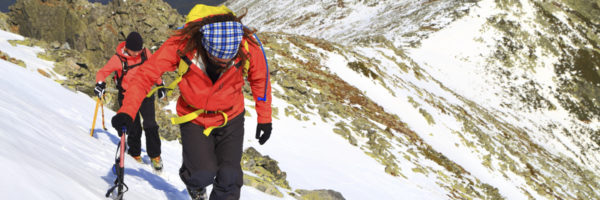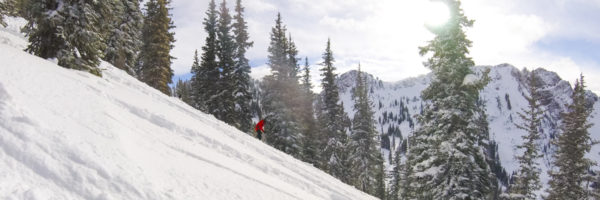Headaches, nausea, and confusion are wearing you down and you can’t continue. “I have to turn back,” you mumble, calling an end to your bucket-list adventure trip. Months of hard work and training are wasted, and you ask yourself how this could happen. The answer is likely dehydration.
Dehydration, commonly perceived as a heat-related illness, can strike under many other conditions such as high altitude, cold and high-humidity. “Traditionally a 2% or more body water deficit was thought to produce cognitive performance decrements; however, recent literature suggests that even mild dehydration – a body water loss of 1–2% – can impair cognitive performance,” explain Drs. Riebl and Davy in “The Hydration Equation” (2013).
The symptoms are miserable, including fatigue, nausea, lightheadedness and more. Additionally, dehydration increases susceptibility to other conditions such as hypothermia. Certainly not something you want to deal with on your next adventure!
While the danger of dehydration in hot weather is well known, in other environments it’s more insidious. Additionally, a 2015 study indicates that hydration needs differ for men and women.
Don’t let it sneak up on you, and be especially careful to hydrate under the following conditions:
Cold
Hydration in cold weather is critical to maintaining blood-volume and preventing hypothermia, but it needs to be a conscious effort.
“People just don’t feel as thirsty when the weather is cold,” says Robert Kenefick, associate professor of kinesiology at the University of New Hampshire. “When they don’t feel thirsty, they don’t drink as much, and this can cause dehydration.” Additionally, the drier cold air increases the amount of fluid lost during respiration and by sweating.
To guard against dehydration during cold weather, make yourself drink at regular intervals, even when not thirsty, and make sure that your fluids are easily accessible. A water bottle stashed deep in your pack is inconvenient and frozen hydration packs are nothing but dead weight. Prepare for winter sports by making sure you have a bombproof hydration system handy that won’t freeze-up when you need it.
Prevent the hose of standard hydration packs from freezing by blowing the water back into the bladder between sips and stowing the tube close to your body. Also, look for an insulated pack and tube, plus place a hand warmer in the pack to raise the temperature in the bladder.
Several hydration companies offer alpine versions of their systems, which can help in cold conditions. Some people suggest buying an oversized jacket and wearing the pack underneath to keep it warm, (I haven’t tried this personally). Unfortunately, most hydration systems will freeze in extreme cold which means you’ll be back to stashing a bottle instead of using a bladder and tube. Test your system before trusting it with your life.
Altitude
People repeatedly confuse the symptoms of dehydration with altitude sickness; however, at moderately high altitudes, dehydration is responsible for more illness than oxygen insufficiency. The primary cause of dehydration at high altitude is increased fluid loss due to rapid and deep breathing of frigid, dry, air. Above 15,000 to 16,000 feet, fluid requirements often exceed four liters per day. Because high elevations are typically cold, you face a “double edged sword” of altitude combined with dehydration. The National Institutes of Health states, ”Past research suggests that vigorous hydration decreases incidence and severity of AMS and other altitude illnesses” (2006). The moral is, hydration is a key element to feeling well at altitude. Read about the day I faced the effects of altitude and dehydration and had to turn back in “Finding Strength on Lone Peak.”
Humidity
In high humidity the air is full of water, yet your body is depleting its fluids at an alarming rate while working harder to cool itself with sweat. In theory, the sweat should evaporate and cool the body, but in high humidity, it doesn’t evaporate fast enough to do the job. In response, the body produces even more sweat creating a vicious circle requiring extra fluid intake to prevent dehydration.
Tight Spaces, Funky Places, and Caves
Sometimes people don’t hydrate enough because it’s too much trouble. For example, when I’m crawling around in a muddy cave, digging a bottle out of my pack with my dirty paws isn’t easy. Alternatively, if I wear a hydration pack, the bite valve ends up slathered in mud, yuck! Not to mention, my packs get severely beat up.
For these conditions, I look for durable materials, a snug stable fit, and the ability to function in weird positions (no comments on that please…) I also use a cap on my bite valve or stow it under my clothes.
Covered in mud, I often hesitated to dig a bottle out of my pack while caving. Now I know better.
In Conclusion
Give hydration more than just a passing thought when planning activities in extreme conditions. Before you leave, know how much water you will need and how it will be stored. Invest in good gear and test it before the trip. Also, remember that in some conditions thirst won’t remind you to drink, so you should set a schedule.
Start hydrating well before activity, so you’re not behind before you begin. And the best way to know you’re getting enough fluid – drink enough so that your urine output remains light colored.
In this post, I’ve tried to raise awareness about hydration in a few less-than-obvious conditions. Share other insidious circumstances where you’ve found yourself forgetting to hydrate properly, just leave a comment below.
References
- Riebl, Shaun K, and Brenda M. Davy. “The Hydration Equation: Update on Water Balance and Cognitive Performance.” ACSM’s health & fitness journal6 (2013): 21–28. PMC. Web. 25 Feb. 2016.
- “Acute mountain sickness: influence of fluid intake.” Nerín MA, Palop J, Montaño JA, Morandeira JR, Vázquez M.Wilderness Environ Med. 2006 Winter;17(4):215-20. PMID: 17219784
- Cold Weather Increases Risk of Dehydration,” University or New Hampshire Media Relations, January 28, 2005.
- “Physiological Determinants of Endurance Exercise Performance,” Department of Kinesiology and Health Education, The University of Texas, Austin, October 1999
- “Medicine for Mountaineering,” The Mountaineers, Fourth Edition, Edited by James A. Wilkerson, M.D.
I originally wrote this post as part of the Hydration Summit, an effort to educate outdoor adventurers of the dangers of dehydration and options for maintaining fluid intake. Finding that the articles were no longer available online, I decided to update and publish them here. I hope you find some helpful tips in this post and the next I’ll share on hydration for senior adventurers.




Comments 12
So true about dehydration in cold weather. I have to force powerade and water sometimes even when not thirsty. It is usually drier in winter, so you can dehydrate faster than you think even when not sweating.
This post is really true that rehydration is important during winter. Make it double as the usual rehydration than you think. 🙂
Great advice. My understanding is that as a general rule of thumb, you should drink roughly half your body weight in ounces, per day of water (so if you weigh 200 lbs, you should try and drink 100 oz.) This may be a little on the high side, but do you have any estimates for how much you should drink when in higher altitudes? Thanks
I actually take a slightly different approach when it comes to water consumption. My rule is that I take between 13 to 17 cups of water (about 2.7 litres) daily, and I believe men should take about 3 litres on average (15 to 20 cup litres) I go slightly lower in winter and slightly higher during summer.
Adventure travel liberates the soul and benefits your physical, mental and emotional state. Good post, thanks for sharing.
Great Tips. Thanks Erika for sharing this article
Most people associate dehydration with hot and humid temps. A lot of people don’t know you can get dehydrated in cold temps as well great post!
Good info i had no idea it was even possible to get dehydrated when its cold outside
I didn’t realize you can get dehydrated that easily in cold temperatures or higher altitudes. I always associated warm weather with it. Great information Thanks!
I love travelling and going on adventures and indeed keeping yourself hydrated, at all cost, is important. Thank you for sharing this great and informative article!
Thank you! Safe adventures Ronnie!
Hi Erika,
I don’t know much about the importance of hydrating until reading your post. Maybe I should prepare better for a adventure outside next time. Thanks for your advice and keep up the great work!